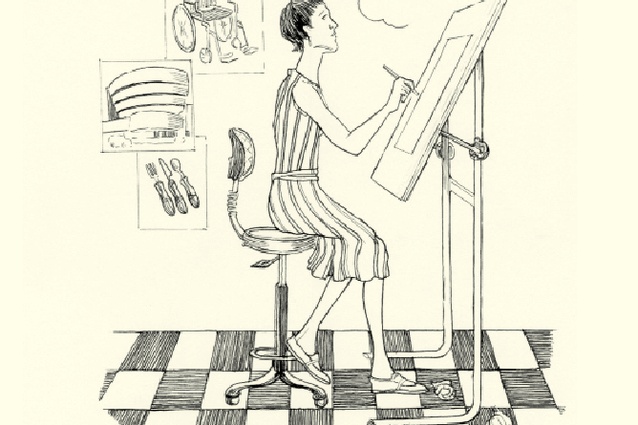Wide angle
Don't design for disability – innovate with it, advises Lynne Elvins.
When discussing ‘designing for disability’ a common starting point is the wheelchair. Wheelchair design can be traced to the 18th century but it was Harry Jennings in the 1930s who designed the folding wheelchair from tubular steel for his paraplegic friend Herbert Everest. Designers driven by wanting to help a friend or relative is a common theme in this type of ‘social design’. Another example is the Good Grips range of kitchen utensils designed by Sam Farber for his wife Betsey who had arthritis and therefore found everyday utensils painful and difficult to use. These situations engage designers to solve problems that are very personal to them and in the case of Good Grips the product range went on to become commercially successful and critically acclaimed.
Disabilities are not just physical. They can be mental, sensory, emotional or a combination of these. As we age, we are all heading toward disability in some form – more than one in four of us who reach 85 will succumb to dementia. One in five children and young people experience mental health problems which significantly affect their ability to get on with their lives.
Designing for people who have a disability or are disadvantaged in society is often viewed as an altruistic moral pursuit. “A nation’s greatness is measured by how it treats its weakest members” said Gandhi – and many other politicians have made similar statements. Government-level response to this has resulted in various countries introducing legislation requiring disability access to buildings, pathways, road-crossings, websites, signage and other information. The resulting ramps, Braille or audio technologies have often been bolted on to meet standards, rather than been embedded at the initial design phase. But this does not have to be the case. Designing something to be accessible to people with specific needs should also make it easier, simpler or more comfortable for everyone to use. This is where the term ‘universal design’ is more appropriate. My favourite building that is wheelchair accessible is the Guggenheim museum in New York. Designed by Frank Lloyd Wright and opened in 1959, all visitors explore the museum’s collection via the long, slowly winding ramp.
How we respond to disability in day-to-day design practice is a more important indicator than whether we participate in isolated personal projects. We should not view disabilities, in any form, as something that should be designed for as if they are separate. Instead they are part of the diversity of everyday users. Innovation is often seen at the intersection of disciplines, where ideas from one sector address a challenge within another. But innovation also comes at the intersection of minds – entirely different people coming together to create new ideas.
Recently HP launched their ‘Hacking Autism’ initiative in the US. It seeks new ideas for touch-technology applications by crowd-sourcing input from the autism community, including families and healthcare practitioners. The innovative designs aim to accelerate technology-based ideas to open up learning, communication and social possibilities. The results are helping children to de-stress and prolong their focus. In London, the first of two Innovation Labs is bringing young people together with professionals to come up with ideas for ways that technology could be used to improve the lives of young people with mental health difficulties. And the Australian Dementia Design School offers training for designers and architects on creating environments that meet the needs of people with dementia – which is producing award-winning care homes that improve the experience for residents and staff.
Anyone interested in design contributing to better lives should seek to understand the perspectives and experiences of people with disabilities. The idea that this approach to design is about altruistically helping a small minority is wrong – insights gained from those outside of the mainstream are a source of creativity and innovation for us all.
twitter: #lynneelvins










